Here’s the coronavirus death toll through December 7. The raw data from Johns Hopkins is here.
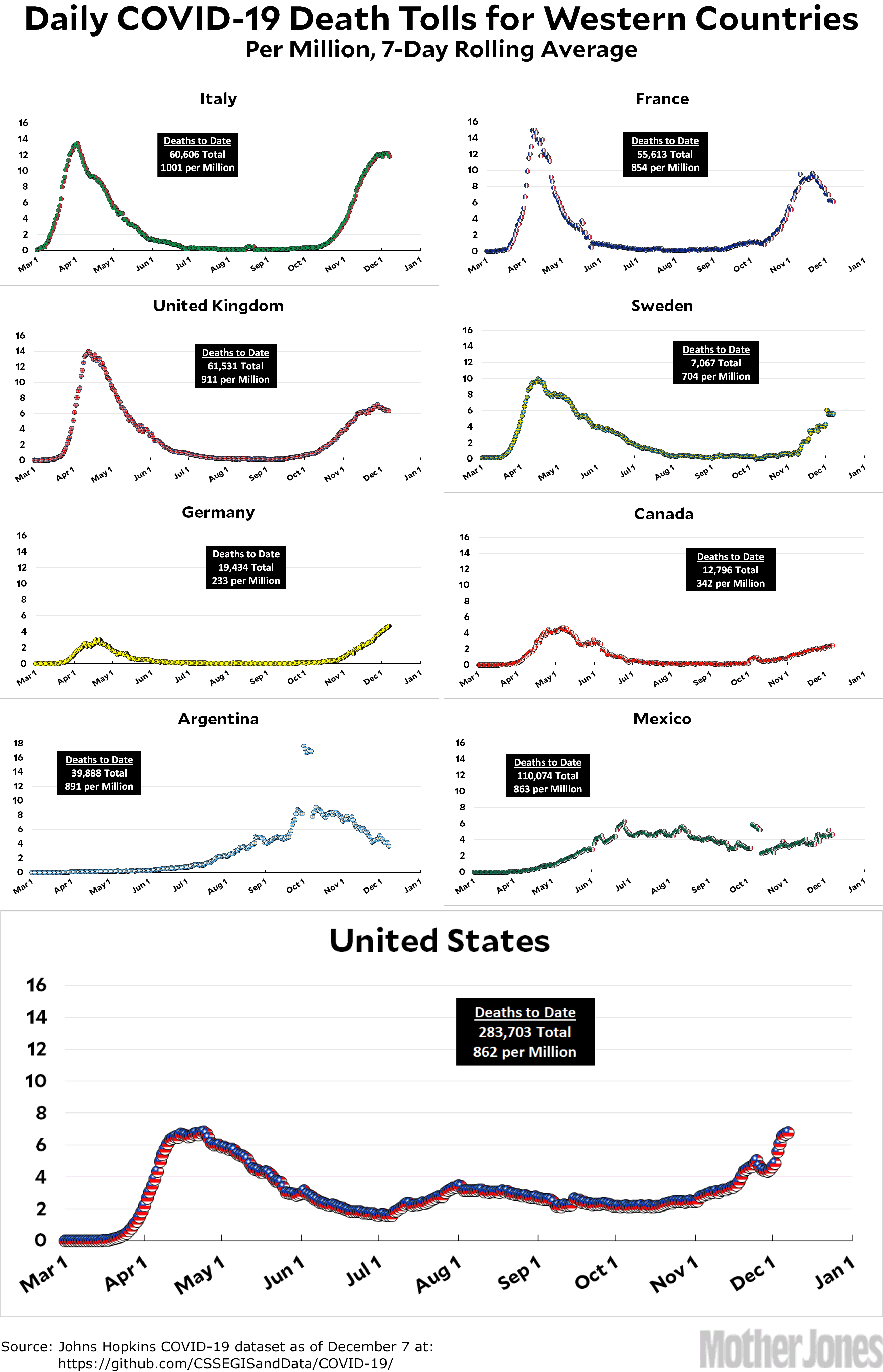

Here’s the coronavirus death toll through December 7. The raw data from Johns Hopkins is here.


John Nacion/SOPA Images via ZUMA
The news of the day is that the federal government contracted for only 100 million doses of the Pfizer vaccine (enough for 50 million people) and declined Pfizer’s offer during the summer to buy more. Now Pfizer says their excess supply has already been promised to other countries, and we won’t be able to get more until June.
This is all true, but keep in mind that the feds also contracted for a bunch of other vaccines. All of these are currently in Phase 3 testing:
All of these vaccines are behind Pfizer in the race for approval, but manufacturing is ongoing. This means that when they get approved—and at least some of them are bound to be approved over the next month or so—there will be additional doses of vaccine available. Given this timeline, along with the pace at which the vaccines can be rolled out to the public, it’s likely that supply won’t turn out to be a big bottleneck. By the time we run out of Pfizer’s vaccine, others will be online and deliverable.
There’s a lot of speculation here, of course. It’s always possible that no other vaccine will ever be approved and we’ll face a shortage. But it’s really not very likely.

General Lloyd Austin in 2016, shortly before his retirement from the Army.Tampa Bay Times via ZUMA
Oh man, I hate this so much:
SCOOP: It’s done—Biden has selected Retired Gen. Lloyd Austin to lead the Pentagon, and will announce his nomination tomorrow. w/@laraseligman @tylerpager @connorobrienNH https://t.co/PidjAhC9AQ
— Natasha Bertrand (@NatashaBertrand) December 7, 2020
I have literally never heard of Lloyd Austin before now, so obviously I have nothing personal against him. But there are two problems here. First, civilians should ultimately control the Pentagon. Trump broke this tradition with James Mattis and Biden should have firmly reestablished it. Second, a Democratic president should appoint Democrats to lead the Defense Department. Not Bill Cohen. Not Robert Gates. Not Chuck Hagel. And not Lloyd Austin. Democrats need to stop feeding the longtime Republican insinuation that people can’t trust the Mommy Party to run our wars.
This is not the biggest thing in the world. It’s just a longtime pet peeve of mine. If Democrats won’t stand up for civilian Democrats to run the Pentagon, who will?
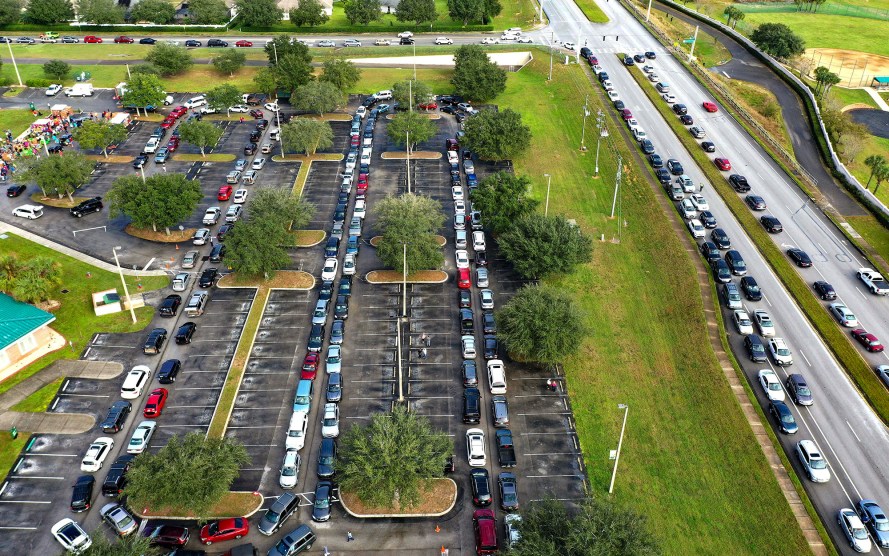
Paul Hennessy/SOPA Images via ZUMA
I don’t have any particular hook for this aside from the looming end of the year, but it’s depressing as hell to watch our leaders screw around with partisan bullshit while COVID-19 is destroying people’s lives. At the end of the year, millions of people will lose unemployment payments. More millions will be in danger of being evicted from their homes. Small businesses are going bankrupt and taking their owners with them. And right here, in the richest nation on earth, lines at food banks are stretching for miles in some places.
Forget about macroeconomics. Sure, spending more money would be generally good for the economy, but I happen to believe that we can squeeze by without a ton of new stimulus. What matters now is simpler and rawer: helping people who need help. That’s it.
I’m not an idiot. I know that even rich countries have practical limits on how much they can spend on social welfare programs. But we’re nowhere near that limit. And anyway, we’re talking about temporary help. By summer, when vaccine uptake reaches critical levels, most of this temporary assistance can be phased out.
So why the hell are we still arguing over it? Why can’t everyone agree that this is a one-off emergency and we need to help the people who need help? It doesn’t require anyone to change their deeply-held beliefs about spending or welfare or economics. It just requires a bare minimum of human decency. How is it that we’ve lost even that?
Three views of Las Vegas: morning, noon, and night.



Here’s a different look at the COVID-19 mortality rate in Europe and the United States:
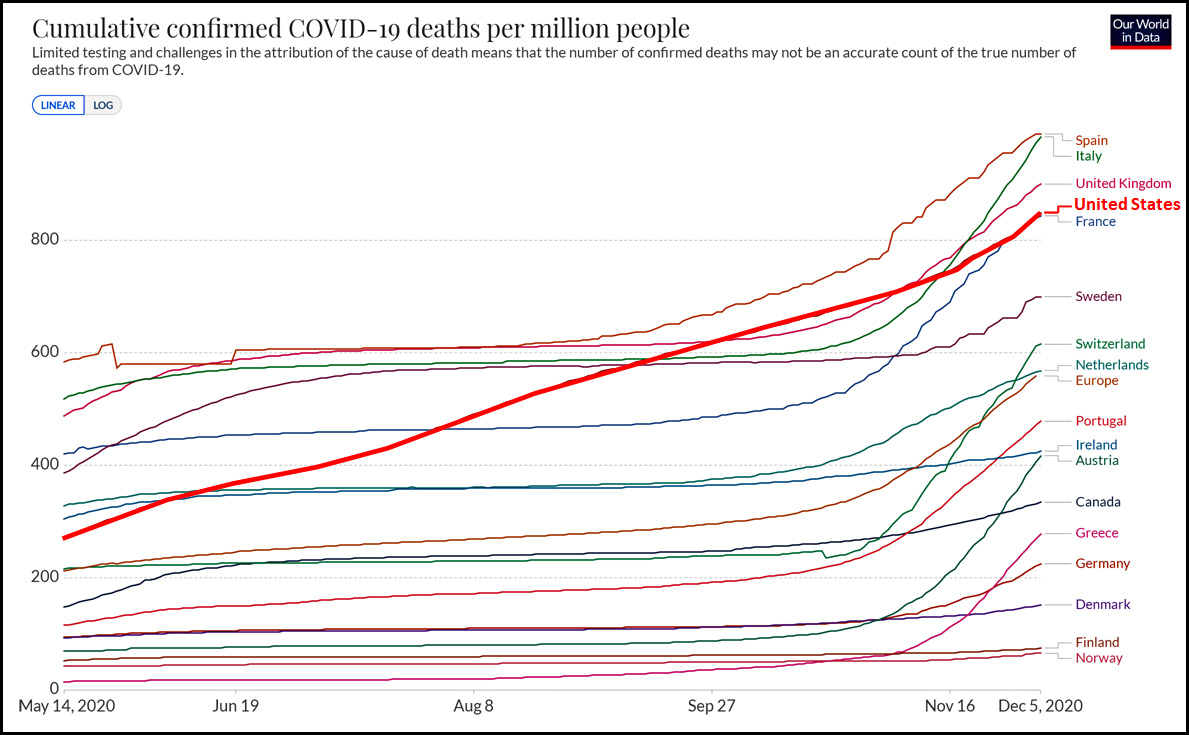
(Belgium is actually at the top, but I removed them because they wreck the scale and make the rest of the chart hard to read.)
Excluding Belgium, the US is at the top of the chart in terms of cases, but only fourth in terms of deaths. What’s truly different about the US is its steady rise. The other countries were flat for a few months and then took off during the latest wave. By contrast, the US just kept growing and growing, steadily overtaking the other countries. Now we’re starting to turn up too and we’ll probably be near the top of the league tables by the end of the year.
Here’s the coronavirus death toll through December 6. The raw data from Johns Hopkins is here.
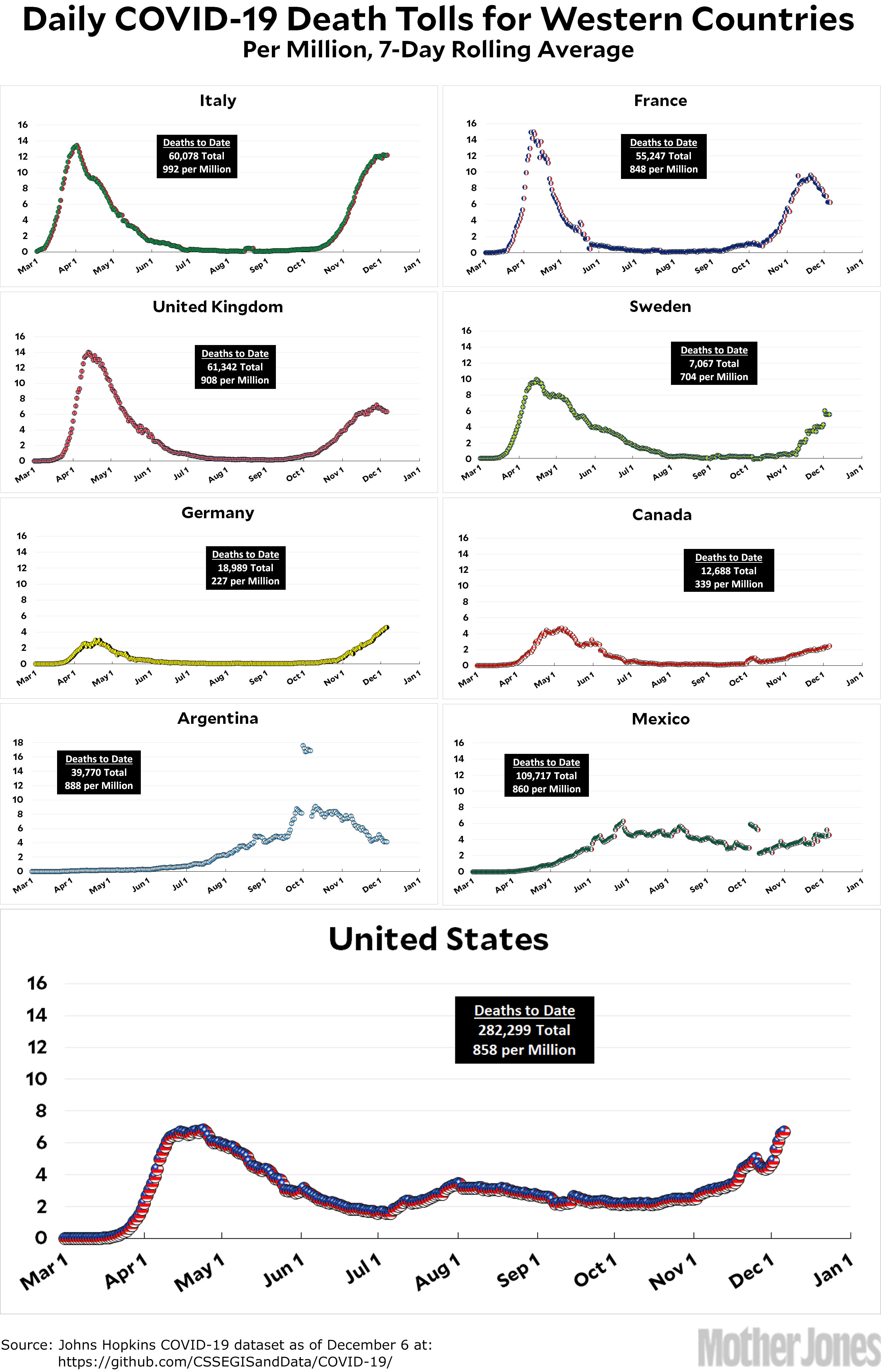
Stop the presses:
🚨 President Trump is considering a made-for-TV grand finale: a White House departure on Marine One and final Air Force One flight to Florida for a political rally opposite Joe Biden’s inauguration, sources familiar with the discussions tell Axios. https://t.co/2YjDTpbuiQ
— Jim VandeHei (@JimVandeHei) December 6, 2020
This is so Trumplike that it almost has to be true. Instead of slinking out of office, he’ll pretend that, by God, he didn’t want to be president any more and that’s the only reason he’s leaving.
What would make it especially great is if every TV network except OAN declined to cover it. In Trump’s mind, that would be almost the same as it not happening at all.
Here’s the coronavirus death toll through December 5. The raw data from Johns Hopkins is here.
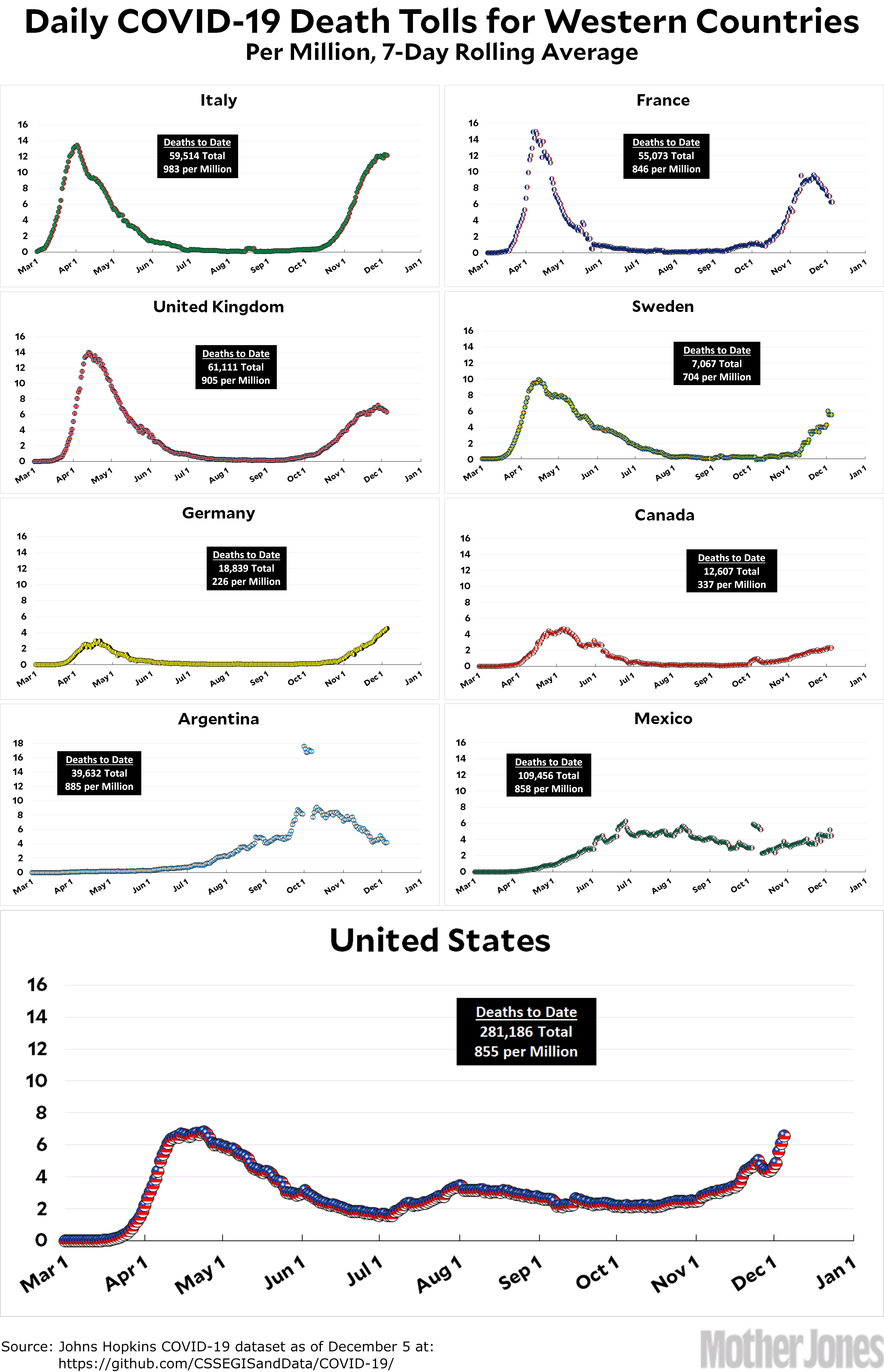
This is a battle that I suppose I have no hope of winning, but it would sure be nice if journalists (and marketing folks) could stop throwing around the term AI for everything that works a little better than it did last year. It’s true that some of the advances in things like machine learning, quantum computing, and conversation bots have been pretty stupendous. My jaw drops at some of this stuff, and yours should too. Nonetheless, none of it is artificial intelligence or, really, even very close to it. It’s like calling the original dynamo of the 1830s an electrical generating network. Those dynamos were important because they made things like telegraphs and telephones possible, but true electrification was still decades away. Likewise, what we’re doing today may end up as the foundation of true AI, but we aren’t there yet.
You may wonder why I care. A little marketing hype never hurt anyone, after all. The reason is that I believe AI will cause massive dislocations in the labor market, and we’d best get ready for them. One of the most common counterarguments, however, is that if AI robots were truly putting people out of work, then we’d see labor productivity going up. (Fewer people making more stuff = higher productivity.) But that’s not what we see:
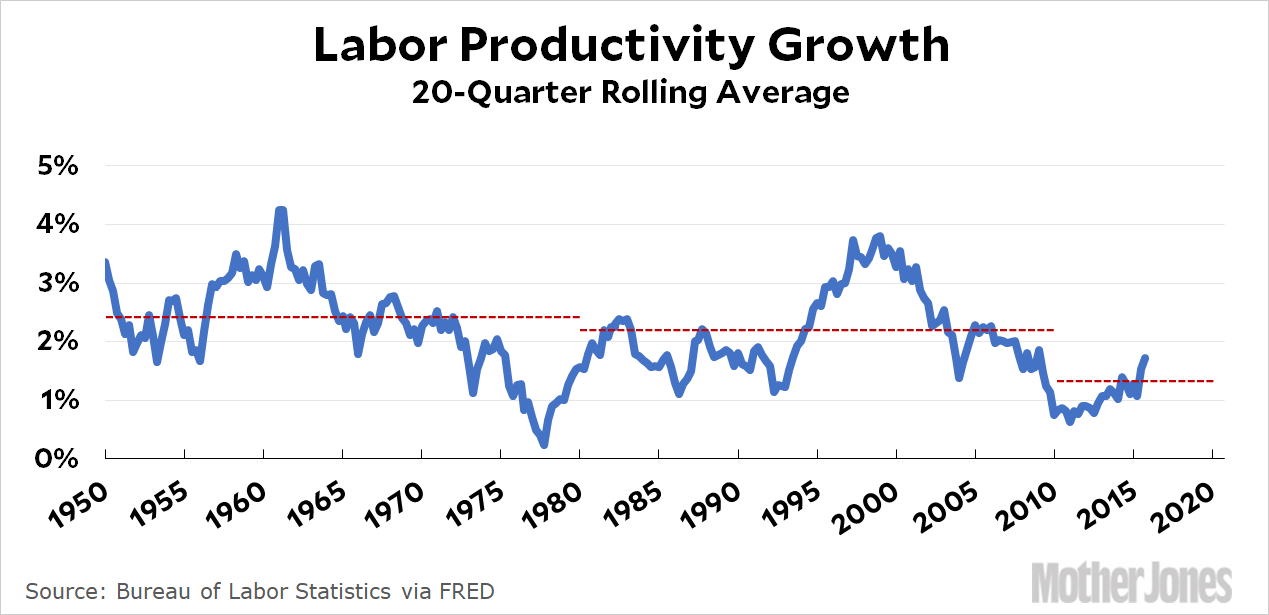
Not only has labor productivity declined a bit over the past 60+ years, but it’s cratered over the past ten years, precisely the time when AI has supposedly started making huge inroads. So the doomsayers are wrong, wrong, wrong.
Ahem. We would be wrong if the past ten years really had seen the introduction of true AI. But it hasn’t. Nevertheless, a lot of people are persuaded by this argument because they hear, on nearly a daily basis, about some new AI breakthrough.
Bottom line: We don’t have AI yet. We’re still a decade or two away from true, human-level AI. In the meantime, what we’re getting is baby steps toward improved automation, which will have a growing impact on the labor market (for example, when self-driving cars and trucks become a reality) but probably won’t lead to massive dislocations.
But around 2030? Or maybe 2035? All hell is going to break loose. I’m still not sure precisely what we can do about this, but the first step is to at least understand what we are and aren’t dealing with today.